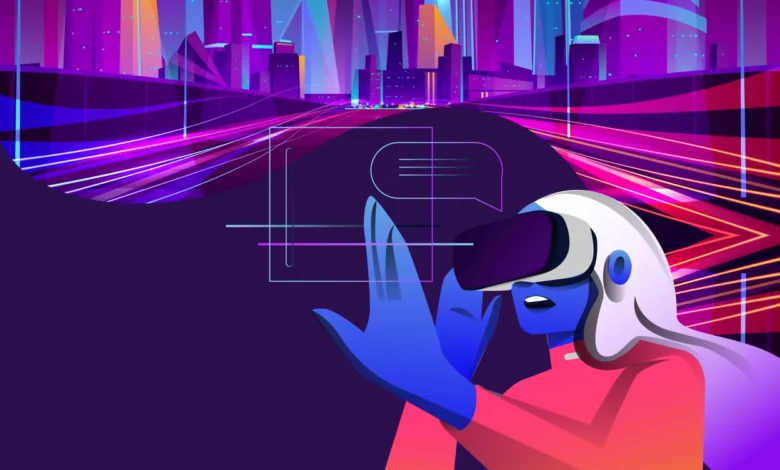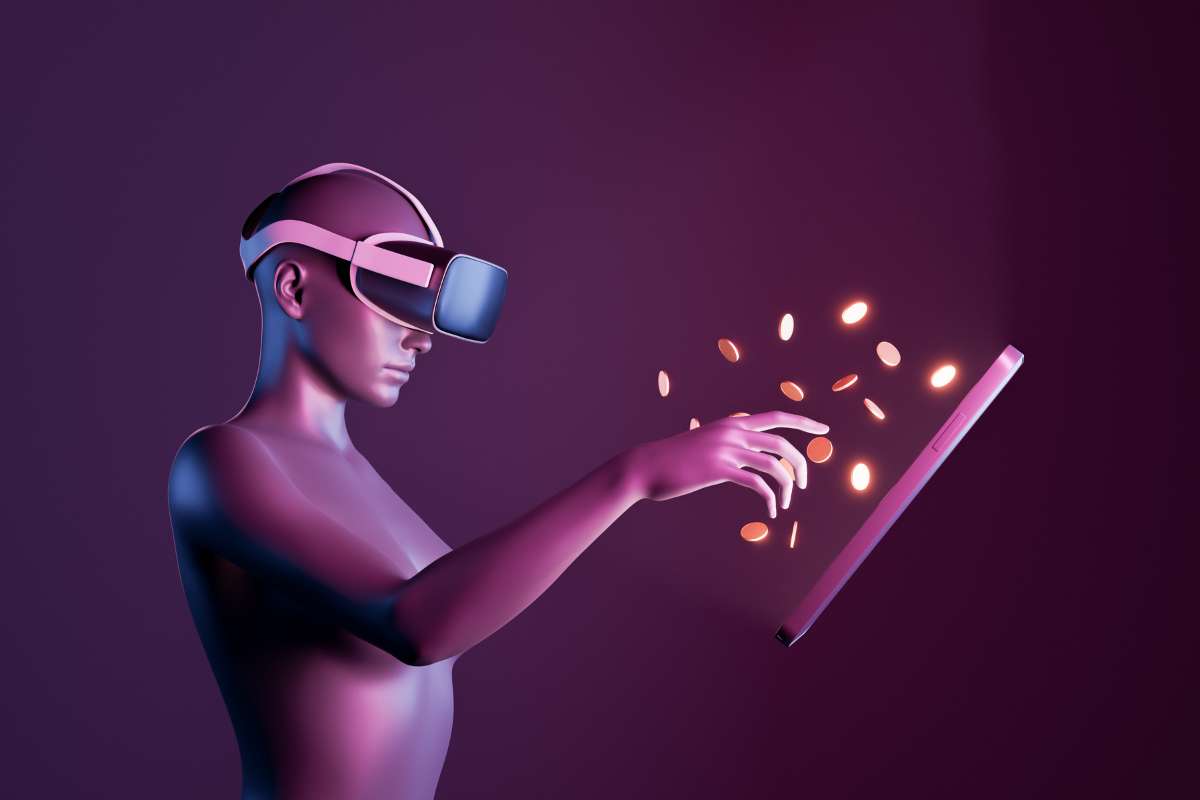There will be a big fight for talent as Indian IT looks ahead to its “metaverse moment.” in 2022

There will be a big fight for talent as Indian IT looks ahead to its “metaverse moment.” in 2022
IT-services professionals and experts in India don’t have to wait long for new things to enjoy, and they can look forward to many new things that will be coming out soon. Even though they are working on digital projects, the metaverse has become the next big thing. When they put on their augmented reality headgear, they can see how the landscape has changed and grown. They see avatars not just playing games but also shopping, banking, running factories, and more.
They say, “We already get questions from customers about how to “metafy” retail stores, studios, and shopping experiences. These conversations are turning into new business.” He didn’t want to be named because “it’s very early, and we don’t want to show you what we are doing.”
There is a lot of money to be made, and Goldman Sachs thinks there is a substantial USD8 trillion market. It will help IT companies expand their offerings to deep tech like artificial intelligence, data analytics, augmented, virtual, and mixed reality (MR). Gartner says that by 2026, one-quarter of 25% of the world’s Internet users will spend at least an hour a day in the metaverse for shopping, learning, social interactions, etc.
PwC says it will be a more conservative, but still huge, USD1.5 trillion business by 2030. People who work for EY say that by 2024, the transactions on the metaverse will be worth about $800 billion, and there will be 300 million people around the world who use it.

Mark Zuckerberg, the CEO of Meta, is one of the most excited about the new wave. He sees the metaverse as the future of the Internet, and he is one of the most excited about it. This is how we live now: We work for a few hours on the Internet every day. We’ll live in the metaverse, and we’ll live like this. Cloud servers store their avatars. Metaverse will be the place where they will use cryptocurrencies to buy land, art, and non-fungible tokens (NFTs) and test-drive cars and learn new skills, all with the help of cryptocurrencies.
For Indian IT, what does the new wave hold? It’s a great idea to move business experiences from 2D to 3D and from physical to virtual interactions. You can see this from companies like TCS and Wipro. They’re making sure they have a plan for the metaverse. Mindtree, HCL Technologies, and others are also making sure their goals are in place. Even so, there will be problems. For example, it will be hard to build up knowledge about your subject and team in a new field, and many people will have to be hired for both of these things. Naturally, businesses that specialize in making metaverses will be easy to find.
In this case, we are building metaverses.
Before these ideas take off, someone has to build them. Tech-services companies can help with that, too. As more and more clients come from around the world, they will need to hire and train more coders to meet their needs. This is what Gaurav Vasu, the CEO and founder of market research company UnearthInsight, says. Companies are already working on projects that use AR, VR and MR, the building blocks of metaverse platforms. About 8% to 10% of the business could come from the same kinds of building blocks in the metaverse in the next few years. According to a group called Nasscom, the tech-services industry will be worth more than $350 billion by 2026.
The chief technology officer at TCS, which looks into industrial use cases, says that businesses have always wanted to make physical and digital experiences that can be mass-customized. They also want to add collaboration, gameplay, and presentation elements to these experiences. It is also teaching associates how to use tools to make metaverse experiences.
Mindtree’s chief technology officer, Aan Chauhan, says that the company is looking into possible partnerships in the metaverse space. “We are also working on internal use cases for the metaverse that will help us work better together and have more fun.”
Mindtree has a wide range of AR, VR, and MR solutions for businesses across various industries. They say they have expertise in computer vision, machine learning (ML), and deep learning, among other things. It is a goal of Chauhan’s for them to build a practice that can fit their existing skills into the metaverse ecosystem.
Wipro’s chief technology officer, Subha Tatavarti, says metaverse projects are the “next wave of investment in the Internet and other technology.” Computing, storage, and network capabilities will have to be more potent than now to make 3D worlds and location-aware interactions possible on a global scale. As a result, they are making the metaverse a reality that will require new technology and applications to be developed and used.
Tatavarti sees a chance on two fronts. There are two parts: the first part is to build new hardware, software, and networking technologies that will help it grow more significant, and the second part is about making and managing the content and applications that will make it happen. “Wipro plans to work in both areas,” she says.

Monetizing the 3Rs
While some parts of metaverse projects are already being built by different companies, these will become a more significant part of how metaverse projects are delivered over time. Sachin Aug, CEO of a tech-staffing company called NLB Services, thinks there will be a big push for 3R development in the next two decades. This includes AR, VR, and XR, all forms of 3R. Companies want to “monetize” digital interactions, says Aug, but they also want to improve users’ experience.
This is what happened on February 17: JP Morgan became the first bank to open a lounge in a virtual world called Decentraland. This is what happened: It said that the metaverse will impact every industry and market and that it will make an estimated $1 trillion a year.
Even Coca-Cola and AB InBev are trying out metaverses. That might be true. Nike is setting up virtual stores and looking for virtual material designers of shoes and other virtual-design jobs, such as those who work on shoes and clothes. In December 2021, it bought RTFKT, a digital design studio that makes trainers that can be worn in online environments. Gucci, Louis Vuitton, and Burberry are also expanding their presence in the metaverse. At the other end of the spectrum, banks and manufacturers are also interested in having a company in the metaverse.
A branch of the South Korean banks Hana and Woori has opened up in the metaverse, a virtual world. The UK’s digital bank, Mercobank, is building a “metaverse” where customers can use banking to look like real life. In the metaverse, Amazon thinks it has found the missing link in e-commerce: a way to touch and feel things. People, for example, will be able to see how furniture looks in their rooms before they buy it.
Many people will want to work on 3R worlds, which are worlds that combine different types of experiences and make them actionable. There will be many people at the top of the metaverse: “Programmers, designers, engineers, and developers will be in charge.” If you think about it, it makes sense that Facebook wants to hire 10,000 people in Europe for its project called the metaverse.
A partner at PwC India, Arnab Basu, thinks there will be a lot of demand for metaverse specialists in the next two to three years. For example, he says, auto companies will hire developers to make test drives for cars in the metaverse, and e-commerce companies will make it easier for people to buy things in real life like Amazon is planning to do. : “These are places where you can have even more social and business interactions.”
It takes a lot of skill to think in 3D.
A 3D virtual world will make the metaverse “a paradigm shift” in user experience, says Chauhan of Mindtree. This is because the metaverse will use 3D virtual worlds. Users will need to use 3D rendering engines like Unreal and Unity to make these persistent and always-rendering environments, giving them a more immersive experience.
People who make these virtual worlds will also need tools and skills that are not the same as those used to make traditional software. In the beginning, integration and interoperability issues may arise because there aren’t many standards in this field.
On the other hand, asset and account management will need to work with a variety of distributed-ledger infrastructure and protocols to make virtual worlds work together and give users a good experience. People will have smooth and high-quality expertise if they have high-bandwidth networks (5G) and suitable user-interface hardware that works well. Users will need a multi-tiered security model (user, asset, environment) to have a safe experience in the metaverse.

Mindtree has started cross-selling resources, both experienced and new, to teach them the technology they need to build a metaverse. It has set up a core team to help incubate the practice and is looking into partnerships with tech leaders and startups to help it get into the market.
Developing metaverse solutions will require teams with a wide range of skills, says Wipro’s Tatavarti. These teams will include software developers and 3D designers, creative directors, storytellers, producers and spatial-computing engineers, blockchain developers, metaverse moderators, and operators. It will be necessary for coders to know C#, C++, JavaScript, Python and more, but “there will be a big preference for those that have worked on Unity and Unreal,” says Aug.
Jyoti Bowen Nath, the managing partner of Claricent Partners, says, “These aren’t roles that have to be done certainly.” As there aren’t many people to hire, IT companies will look for employees at small businesses or even gaming industries.
While some companies are making early bets, the lack of engineering talent could keep them from making big moves in the short term. In the last 18 months, many top-tier companies have seen a rise in digital transformation projects, which has led to more people leaving their jobs. According to Nasscom, the industry will grow at its fastest rate in FY22, and this is because more people are using digital tools.
However, there will be a shortage of engineers, which will open up opportunities and demand for service businesses, startups, and even gig workers. Also, it will be hard to get very good at apps for metaverses, AR/VR, security, social commerce, and more. Yugal Joshi, a partner at Everest Group, says virtual gaming is a $200 billion business, but tech service providers don’t get a lot of that money. There are a lot of tech-services companies in industries like BFSI, manufacturing, and retail that use them.
Indian IT-services companies are more likely to work in businesses that use metaverse solutions to start new businesses. Companies like the USD25 billion TCS think they will play a more significant role when it comes to metaverses.
Metaverse platforms, which use 3D virtual worlds, are a significant change in how users see things. Indian IT needs to get more than just a foothold in this field, or it could end up playing catch-up with global rivals like Accenture and small businesses, only to see them get the high-value deals.
edited and proofread by nikita sharma




